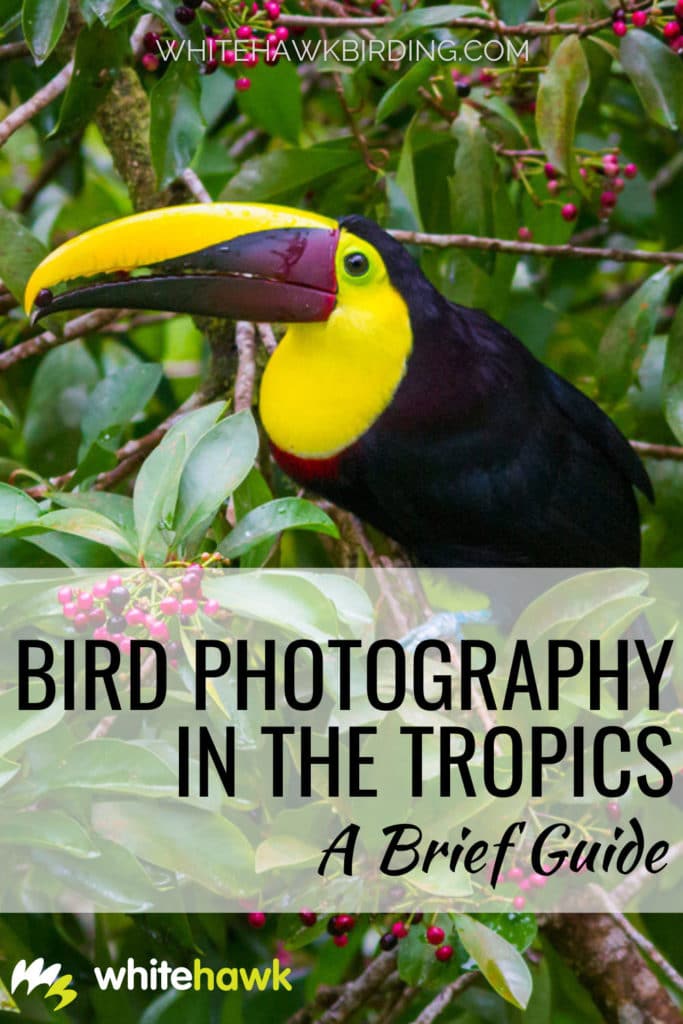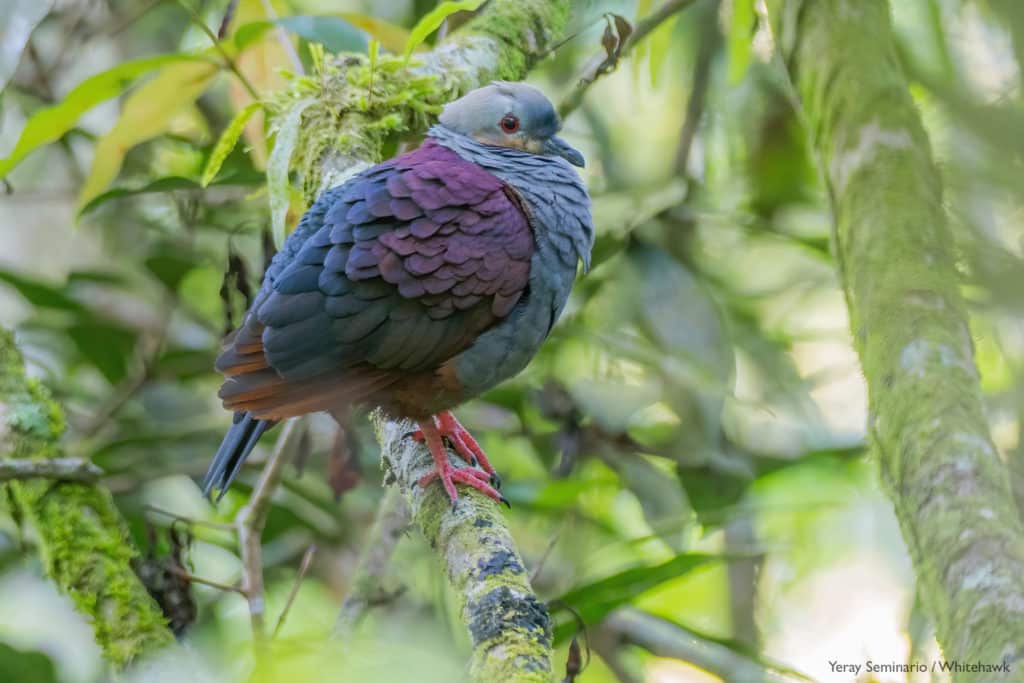
Bird photography is experiencing a real boom right now. More and more nature photography enthusiasts are now looking at birds and making them part of their hobby. At the same time, more and more birders enjoy taking pictures of the birds they observe. It is common to find groups of birders where at least half of them carry a camera. In most cases, they use DSLR or mirrorless cameras with interchangeable lenses.
Tropical forests are home to a significant percentage of the world’s birds. The tropical forests of South America, Africa, Asia, and Oceania hold almost three-quarters of the bird species in the world! A large part of the birders in the world, either because they live in the tropics or because they are on a trip dedicated to finding birds in tropical forests, spend their time photographing birds in the tropics.
However, tropical forests present many challenges. When photographing birds, there are a series of conditions that we must take into account to obtain the best results. Some of these conditions have to do with the photographic equipment we use. Others with techniques that can be more or less simple to apply. In fact, I think it’s fair to say that taking pictures of birds in the tropics is all about solving one problem after the other. Then, hopefully, we will get the image we are looking for! With this brief guide to bird photography in the tropics, we want to help solve these problems. We hope that with the information and tips provided, you can improve your photographs in tropical forests.
Tropical forests are very cool, but there’s very little light!
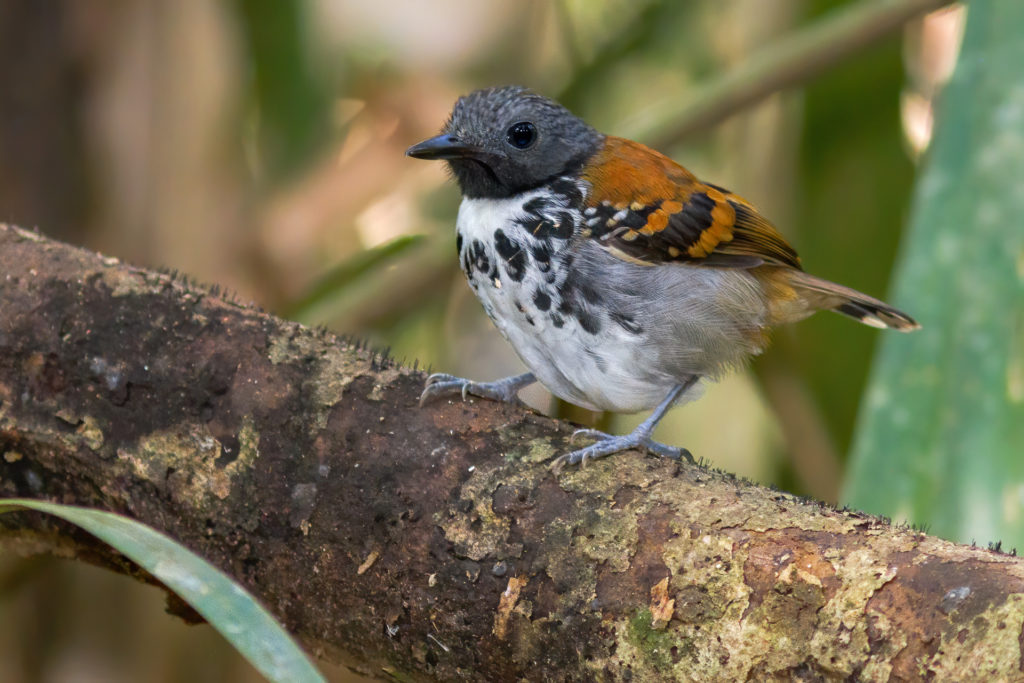
One of the main problems, if not the main problem, that we face in tropical forests is the lack of light. This will hugely affect our approach to bird photography in the tropics. After all, some birds rarely leave the dense interior of the jungle, where light is extremely scarce. We can also find situations where the light changes frequently, with birds moving between brightly lit and shadowy areas. Fortunately, there are a number of techniques that we can use to overcome this problem.
- Using flash and tripods are a way to compensate for the lack of light. However, they also have some disadvantages, like carrying more equipment and adding weight and taking up space in our luggage.
- Using slow shutter speeds as long as bird activity allows it! Some of the existing equipment today allows us to take sharp pictures with great stabilization systems. Explore the market and see which models have the best options for you.
- Increasing the ISO as much as you can, depending on your camera. Here, the camera you choose for your bird photography is key. For more on what camera equipment you should use, keep reading!
The best cameras for bird photography in the tropics
Today we have a huge range of cameras available for bird photography. The offer is so great that carrying out a study of which cameras are best for photographing birds in the tropics would take us an entire post. More than naming certain brands or models, for now, we can recommend what characteristics to look at when choosing one. To begin, we are going to restrict ourselves to two types of cameras: reflex cameras (DSLR) and mirrorless cameras. Currently, it is these two options that are going to give us the quality and sufficient guarantees to photograph birds in tropical environments. These are the characteristics that in my opinion should weigh more when buying a camera:
- Sensor type and quality. A sensor that provides between 15-20 megapixels or more and, more importantly, that provides low noise levels at high ISOs. In principle, the larger the sensor, the higher the image quality and the less noise at high ISOs it will have, but today there are sensors up to 2X that provide high image quality.
- Autofocus type. The speed of the autofocus is certainly very important when photographing fast-moving subjects such as birds. Today, there are additional tools such as motion focus or even bird’s eye focus, which can greatly facilitate our work. This new technology is revolutionizing bird photography and the main brands are incorporating it into their latest models.
- Size and weight. For me, this is one of the most important features to consider. Personally, I prefer to sacrifice a bit of camera and lens quality if I can carry lighter equipment that takes up less space in my backpack. This is especially important when we go on long trips or carry a large amount of material.
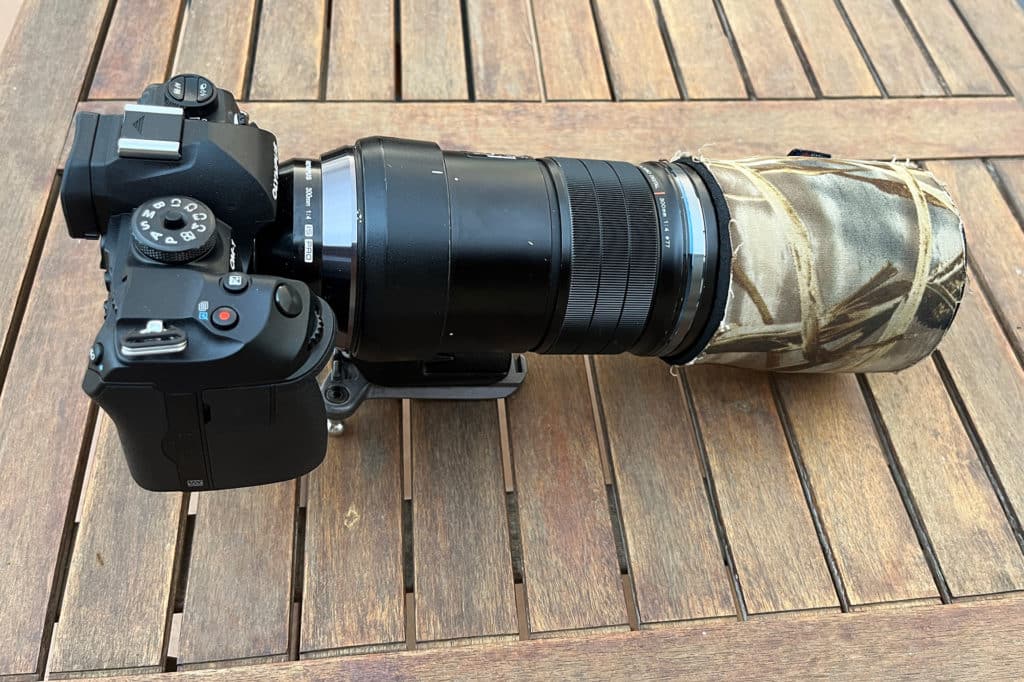
What lens should I use to photograph birds in the tropical forest?
As with cameras, there are a plethora of optics to choose from. However, we have some limits in terms of camera make and model. This makes your choice easier. I would say that the minimum focal length to photograph birds is 300mm and ideally 400mm for full-frame sensor cameras. Obviously, the larger the focal length, the better it will be for shooting birds. After all, birds are usually small subjects that don’t tend to be very close. However, we need to take into consideration the size and weight of the lens. Sure, 500 and 600mm f/4 are surely the best choices to photograph birds. But you have to consider how long you are going to carry a bulky heavy lens. Not to mention, you would need a serious tripod to mount it on.
My preference is to compromise a larger focal length for a lighter lens. That way, I can easily carry my camera with a sling around my shoulder or even a belt around my hip. Whatever lens we decide to bring, we should always consider that light conditions can and will be tough. So, a maximum aperture of f/4 is desirable.
To flash or not to flash?
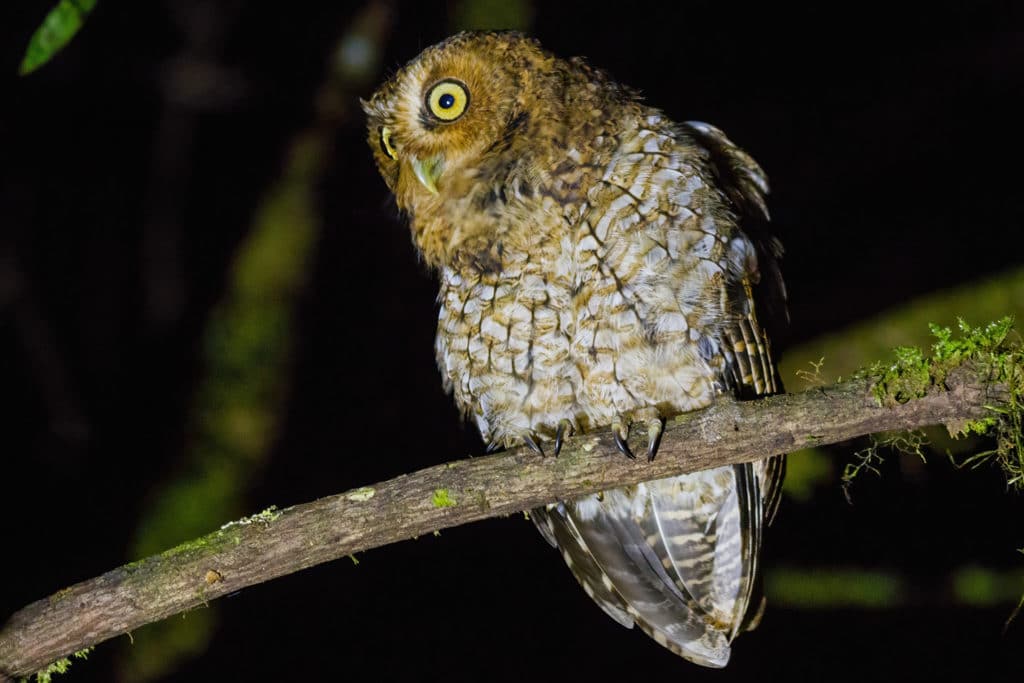
There are excellent photographers specialized in bird photography in the tropics. They do impressive work with moderate use of flash, such as Glenn Bartley or Greg Basco. Also, there are photographs that even today are only possible thanks to the use of one or more flashes.
However, personally, I rarely use the flash anymore when photographing birds. Sometimes, using a flash can improve our photos to a greater or lesser extent. But, there are also a number of drawbacks:
- The most important thing of all is that the use of the flash, especially if it is not used in moderation, can alter the behavior of the birds that we want to photograph. One only needs to imagine having a photographer taking several flash bursts about 10m from our eyes to know that this may not have a positive effect on birds, especially in low light conditions or at night when birds have adjusted their low light vision.
- It is one more component of our equipment to add to the long list of equipment. Sometimes it can add significant volume and weight, we must carry a good number of rechargeable batteries for its operation, as well as spare parts, and also a battery charger! As a bird guide, my priority is to find the birds, so I have to think twice about carrying a flash in addition to the binoculars, telescope, and camera.
- Consider the expense of adding this piece of equipment, combined with batteries, chargers, etc. Good flashes come at a price, maybe even as much as a good lens for doing landscapes or macro!
- Those sparkling eyes! The use of flash produces, inevitably, a reflection in the cornea of birds and other fauna which, on many occasions, can ruin a good photo. It also makes the use of flash in capturing the image rather obvious.
- In addition to the birds, the use of flash can annoy your fellow birders, who may be watching and taking pictures with you. It is not uncommon that after activating the use of the flash, a bird gets up and leaves, causing an awkward situation with the rest of your birding companions.
- Digital editing tools can partially replace the use of flash. Today, with the dynamic ranges of most cameras and processing tools, we can convincingly “light” our subject.
Regardless, of what your preference is, consider the ups and downs. Even though the use of flash will be reserved for the most dedicated photographers whose sole purpose is to photograph birds, feel free to experiment with all the tools you have available. For instance, to photograph birds at night, as an alternative to a traditional flash, we can use an LED flashlight to shed light on the scene. This light, less powerful and constant, probably has a much less pernicious effect on birds.
Is it essential to use a tripod for bird photography in the tropics?
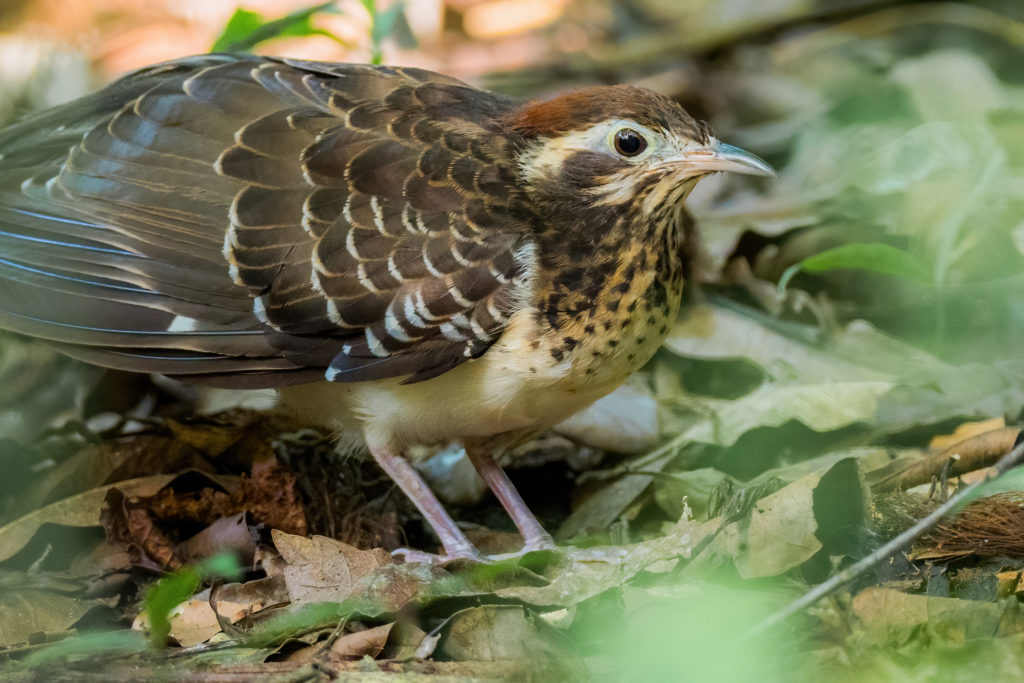
Yes and no. A tripod is an indispensable tool for any photographer, including bird photographers. It’s true that using a tripod in situations with low light (and in fact in any situation!) helps us get higher quality photographs with long focal length lenses. It also helps increase sharpness or even makes it possible to obtain different photographs, which up to recently were impossible to obtain without a tripod. However, today cameras and photographic lenses have stabilization systems. These systems make it possible for us to obtain very sharp photographs with 300-400 or even 500 mm focal lengths without the use of a tripod.
We must also consider the extra weight and space in our backpacks. Extra weight will make us slower as we move through the forest. It also makes us slower when setting up our frames before shooting. Obviously, with lighter equipment and without a tripod, we can be faster and more versatile. For me, the convenience and speed of not having to carry a tripod make up for that loss of sharpness in some cases.
As a guide, I carry more equipment including a telescope with its tripod and binoculars. So, carrying a second tripod is totally unthinkable. Therefore, I have opted for the lightest possible equipment, with a fixed focal length of 300mm. This allows me to obtain photos of birds using lightweight equipment. The stabilization system on my camera allows me to take photos in poor light conditions at very low speeds without a tripod. This was totally unthinkable until now!
Type of equipment according to our level of dedication to bird watching and photography
It all depends on our approach to photography. This short guideline outlining the type of equipment needed for each profile might help you:
- I’m mainly a birder that takes pictures of birds occasionally: perhaps a bridge camera will suit your needs better, without the need to carry bigger and heavier equipment.
- I’m mainly a birder with a great interest in photography: a smaller mirrorless camera with a small lens to shoot handheld may be enough to combine bird watching with photography.
- I’m a photographer mainly interested in birds: when photography is our main objective, then it is advisable to give it your all. We will need a full-frame camera, a 500 or 600mm long focal lens, a flash if it fits our photographic style and we use it moderately so as not to disturb the fauna, a large and heavy enough tripod to provide great stability and a backpack of considerable proportions to carry this equipment and all the pertinent accessories.
Finding the birds in the tropical forests
Now we have the right equipment. The next problem we face when doing bird photography in the tropics is finding the birds! Many tropical birds are difficult to locate. They spend time in thick vegetation or inhabit high parts of the forest canopy where they are difficult to access. How can we access some of the more complicated species?
Use Local Guides
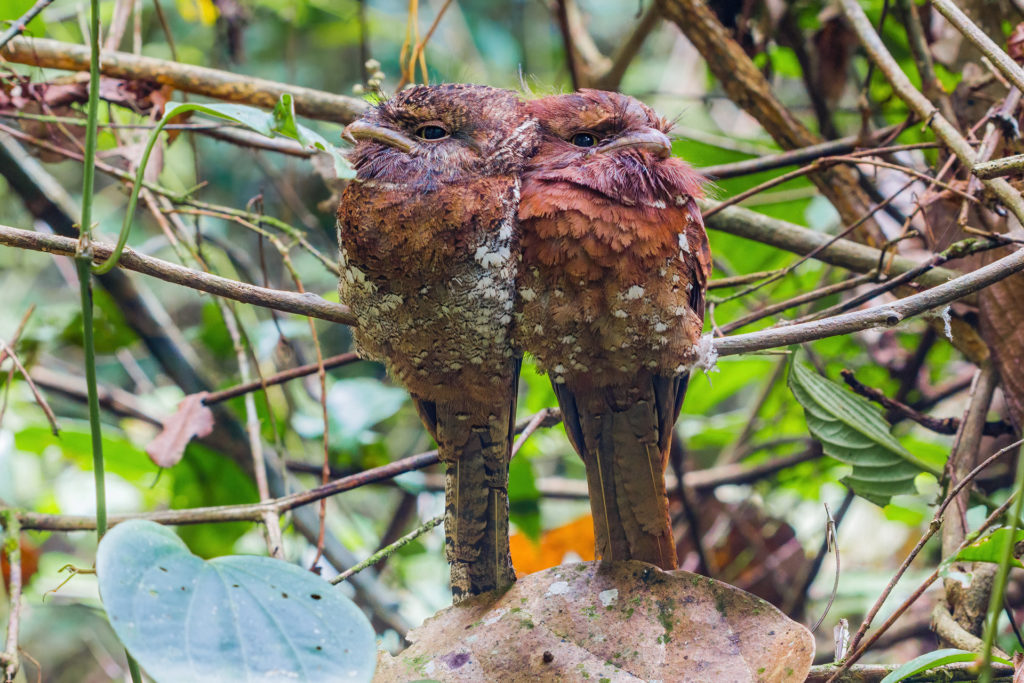
A good local guide is essential. They can help us see and photograph birds in tropical areas, especially those that are more difficult to find. At Whitehawk we always have professional local guides for our excursions and tours. Plus, it’s a great way to contribute even more to the local economy. With a guide, we do not guarantee to find all the species we are looking for. But, we will surely find a greater number of them and we will be able to spend more time observing and photographing them than looking for them, often like a headless chicken!
Feeders
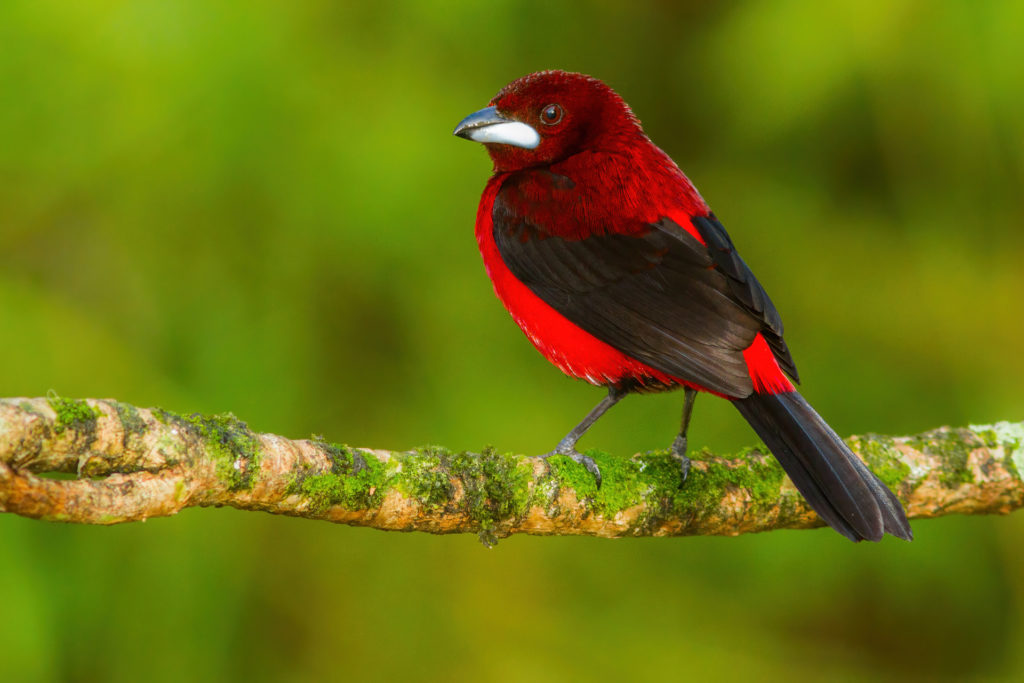
The use of feeders has become popular in recent years. They attract birds in such a way that we can enjoy watching them or photographing them relatively close up. Many hotels are now placing them in strategic locations as an attraction for their customers. Some are tremendously popular. Photographers, bird watchers and nature lovers visit them. Locating some of these feeders and knowing which hotels offer them is a good exercise before organizing a trip. Different species of toucans, tanagers, and motmots often frequent fruit feeders. These are perfect targets for photography at feeders. They can be rather difficult to find in the middle of the jungle. Hummingbird feeders deserve a special mention. Some hummingbird species can be tremendously difficult to find unless they attend feeders specially dedicated to this group of birds.
Fruit trees
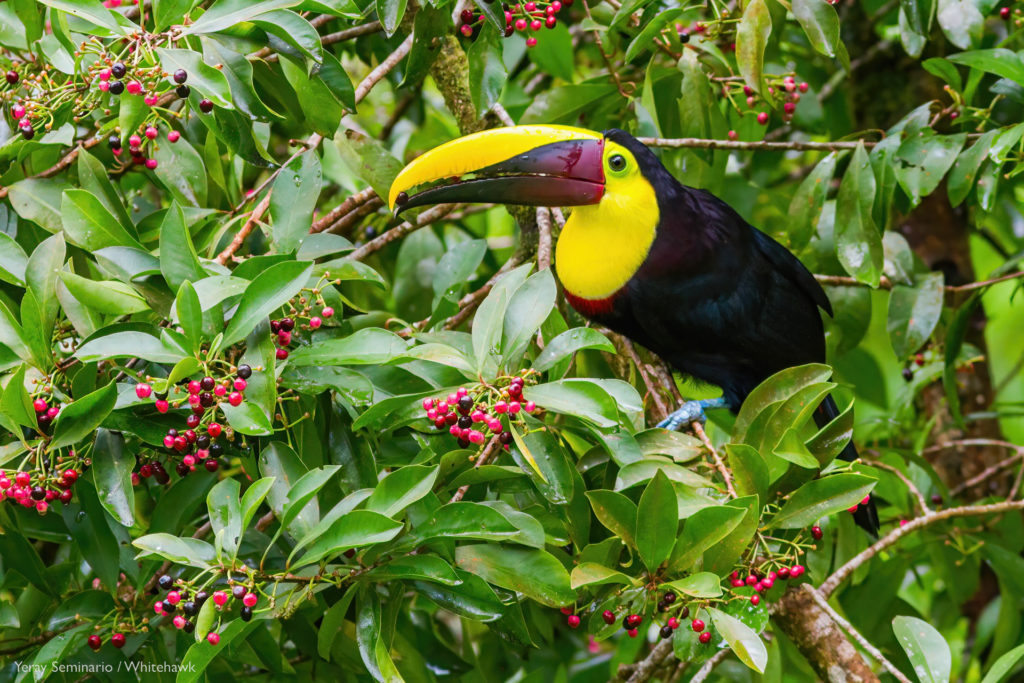
When hiking in a tropical forest, pay attention to the trees that are bearing fruit. With a little patience, waiting can pay off. Many bird species frequently visit these trees. Even some insectivorous birds, such as flycatchers, feed in fruiting trees at different times of the year. In addition, if we remain silent and don’t make sudden movements, the birds will get used to our presence. This is another opportunity for very good photos.
Observation towers
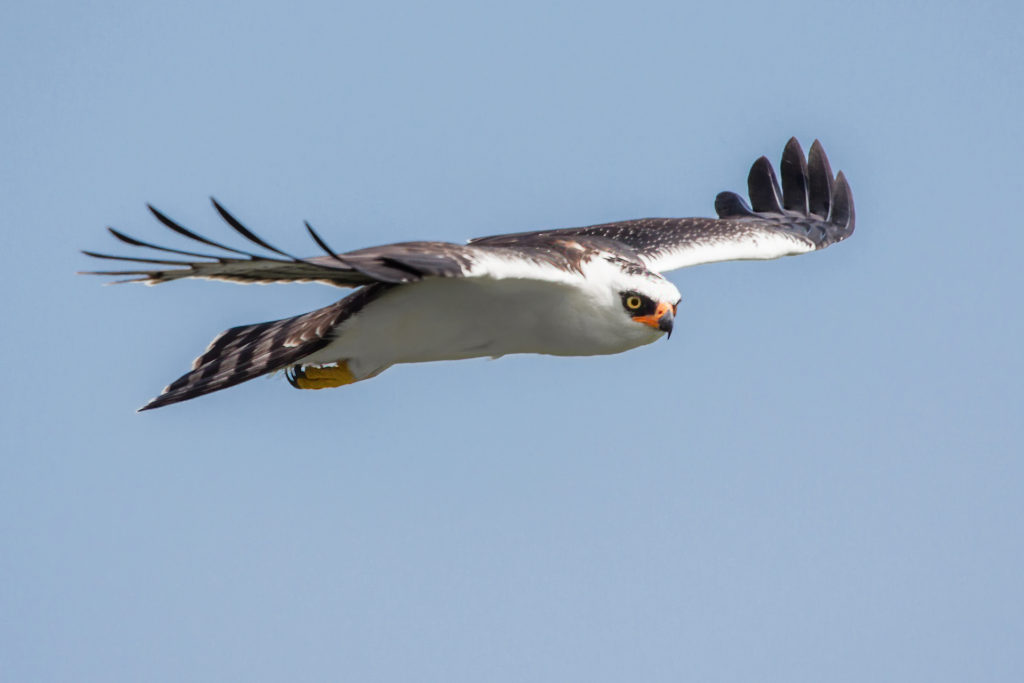
The construction of observation towers in the middle of the jungle has also become popular in recent years. Of course to a lesser extent than feeders, due to the complexity and cost of their installation and maintenance. Some famous examples include the tower at the Rainforest Discovery Center on Pipeline Road (Panama), the Yasuni Canopy Tower in Ecuador, and the Posada Amazonas in Peru. These towers allow us to get closer to some bird species (and also mammals, reptiles, and insects!) that mainly inhabit the upper parts of the canopy. Here we can find birds such as cotingas, puffbirds, and jacamars. We can observe flocks of parrots in flight. We can see Neotropical birds of prey soaring overhead. We can observe other species which otherwise would remain hidden from our eyes from the depths of the jungle.
Hides for Bird Photography in the Tropics
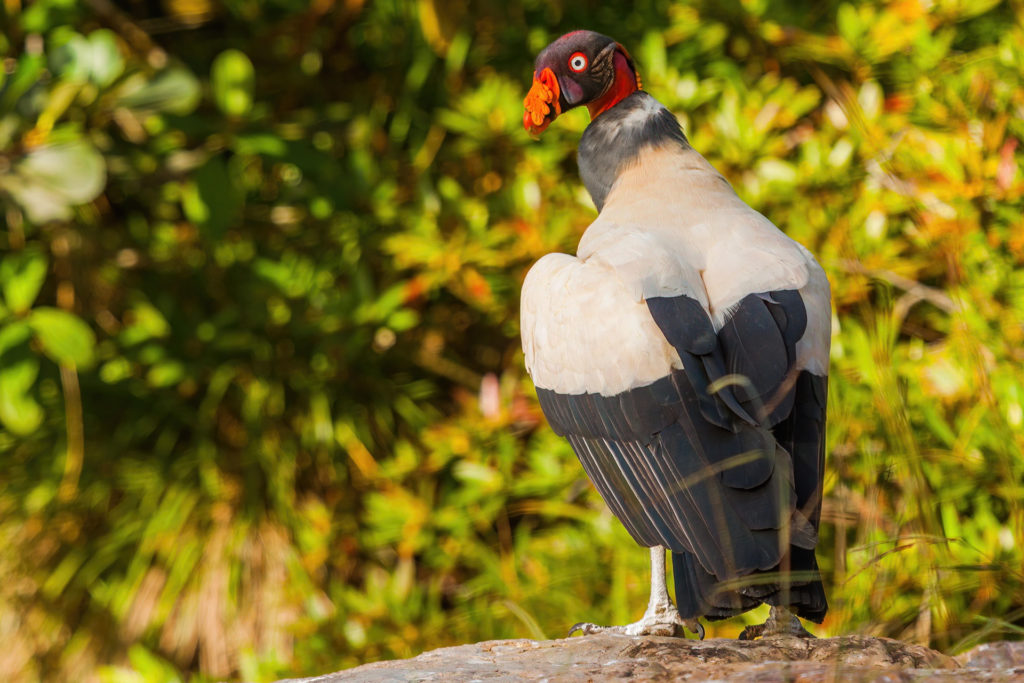
The use of hides is not as frequent in tropical countries as it can be in Europe or North America. However, recently, some have set up blinds inside forested areas in Colombia and Ecuador for viewing and photographing lekking Andean Cock-of-the-Rock. Very elusive birds like wood-quails, quail-doves, and antpittas are often drawn to areas by food offerings. From a blind and feeding stations, we’ll have much better chances of photographing these birds. It is much easier, of course, than coming across them on a forested trail, where we often only them as they scurry away!
Playback calls to attract birds
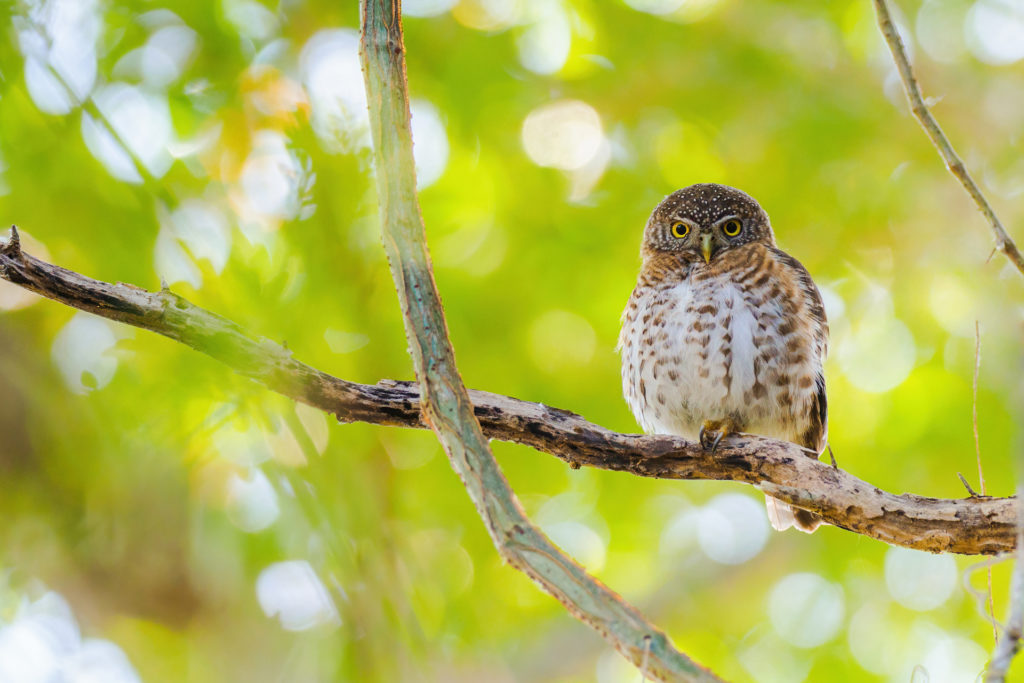
One of the techniques used to attract birds is the use of playbacks. Playbacks are recorded vocalizations of birds. And they can be very useful in attracting birds. This practice is becoming more widespread, especially among professional guides. However, photographers who want to have the birds very close to obtain quality photographs are also using playbacks. However, their use is not without controversy, since it can have a negative effect on the birds. From our point of view, we must be aware of several aspects at all times:
- We avoid using playbacks with sensitive species, whose populations are very small or in danger, in such a way that we can interfere with their behavior, especially in those more delicate moments, when these birds are breeding and it can negatively affect their productivity.
- Use the claim only for a very limited time and stop it immediately after establishing contact, without persisting over and over again to get more photos.
- Use the claim at an adequate volume, in such a way that it does not attract but rather deter the birds.
- Avoid the use of calls in places that we know are frequently visited by other birders.
Here you can find an article about the negative effect of luring in tropical birds.
We should bear in mind that many protected areas strictly prohibit the use of playbacks. We must stay informed about the restrictions of the areas that we are going to visit. For example, playbacks are not allowed in any of the national parks of India. Park guides will warn or fine us if we use them on our own. Sometimes its use entails the payment of fines.
Some final tips for bird photography in the tropics
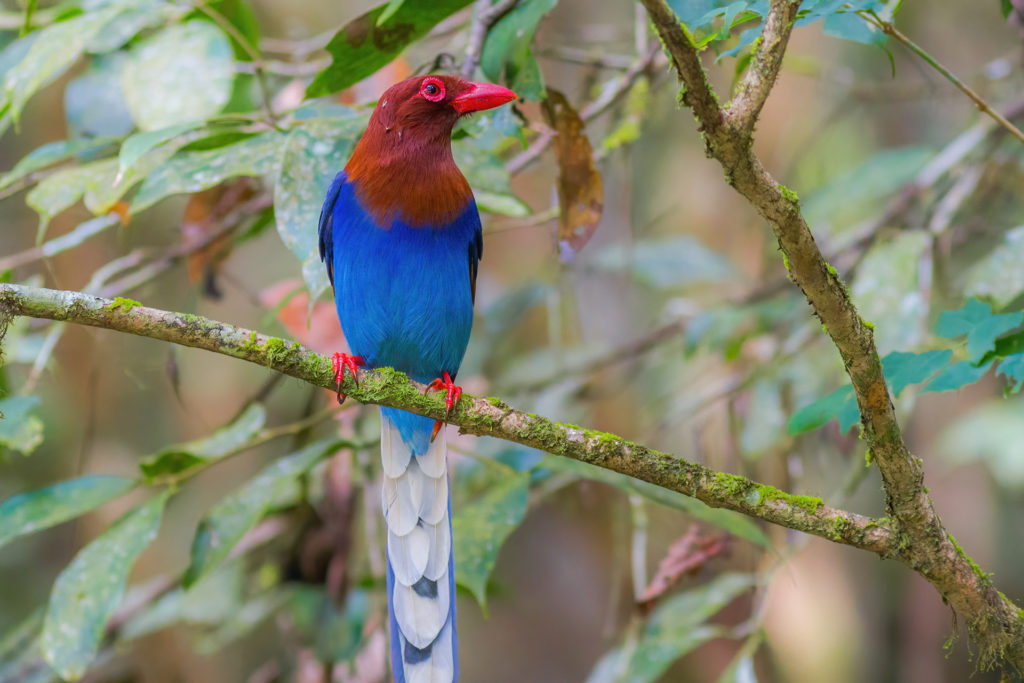
- When walking a trail in a tropical forest, it’s usually best to use just your eyes to look for birds, not binoculars. Once we locate the bird, it may be more interesting to study its behavior and see if we can get closer so as not to disturb the bird. In this way, we can also be closer and take several photographs until we have a frame where leaves or branches do not appear.
- Be quiet and fast! Most tropical birds, especially small ones, move quickly and don’t usually give us many opportunities for extended photography sessions. Keep quiet and use presets to always be prepared and shoot as soon as we spot a bird in an unusual or scarce place to take at least one testimonial photograph. Then we will have time to try to improve it with other parameters and other frames if necessary.
- Study the behavior of birds patiently. Although you have to be alert and quick to locate many tropical birds, on many occasions, it is better to take a step back and not rush the birds, but study their behavior, and observe if they are feeding, courting, or interacting with each other any other way. Spending time with the birds and letting them get used to our presence can give us a lot of satisfaction. Not only because we will be able to obtain better photographs, but also because we will be able to share their space and witness their daily chores without disturbing them.
- Always keep an eye on the background. This is valid for photographs of birds in any environment, but even more so in the jungle where there is usually a large amount of vegetation that can enrich but often also hinder when it comes to achieving an aesthetically attractive image.
- Picture processing. Much could be written about the processing of this step of photography since good processing with the use of the latest digital tools can considerably increase the quality of our final result. Although this topic gives for an entire post in itself, suffice it to say that this last step before reaching the desired photography is of great importance, and learning to use these essential techniques if we have minimal pretensions in tropical bird photography.
We hope that the information provided and these final tips are helpful to improve your bird photography in the tropics. If you want to explore the tropical forests in our company, we have a variety of birding tours that are adequate for bird photography enthusiasts. Take a look at our tours and contact us if you want to come with us and improve your bird photography!
~ Yeray
* This post is open to constant modifications. If you have any comments about the recommended techniques or want to share your experience with us, write to us and we will be happy to include it in our blog!
